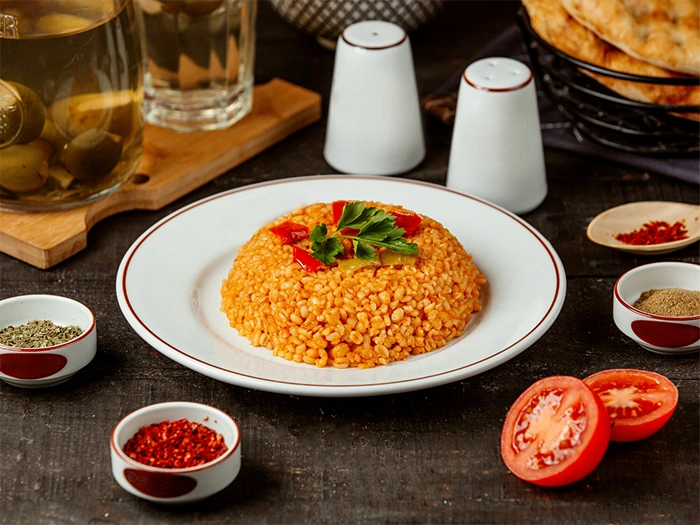

Top Health Benefits of Turkish Bulgur Pilaf You Need to Know
Turkish Bulgur Pilaf is a highly nutritious and versatile dish, offering a wide range of health benefits. Bulgur, the main ingredient, is a whole grain that is rich in fiber, which aids in digestion and promotes a feeling of fullness, making it a great option for weight management. It is also packed with essential minerals like iron, magnesium, and phosphorus, which contribute to overall bone health and muscle function. The inclusion of vegetables, such as bell peppers, tomatoes, and onions, adds a boost of vitamins like vitamin C, A, and various antioxidants, which help strengthen the immune system and protect against chronic diseases. Additionally, the olive oil used in the recipe provides healthy fats, particularly monounsaturated fats, which are beneficial for heart health. With a balance of complex carbohydrates, fiber, and plant-based protein, this dish is an excellent choice for those looking to maintain a balanced and healthy diet while enjoying a flavorful meal.
Recipe :
For 4 people
Enjoy your delicious Turkish Bulgur Pilaf!
When preparing Turkish Bulgur Pilaf, it is essential to ensure that the bulgur is rinsed properly to remove any excess starch, which can affect the texture of the pilaf. While sautéing the onions and bell peppers, make sure not to overcook them, as this will preserve their natural sweetness and vibrant color. It's important to carefully monitor the liquid-to-bulgur ratio – if you're using water, ensure that it's enough to fully cook the bulgur but not so much that the dish becomes too soggy. If you're using chicken broth for additional flavor, opt for a low-sodium version to keep the meal healthier. Once the pilaf is done cooking, let it rest for a few minutes before serving to allow the flavors to meld and the bulgur to firm up. For an extra touch, garnish with freshly chopped parsley, which not only enhances the dish's appearance but also adds a burst of fresh flavor.

Turkish Bulgur Pilaf is a suitable option for various dietary preferences, particularly for those following Mediterranean, vegan, or vegetarian diets, thanks to its plant-based ingredients and whole grains. It is naturally gluten-free if you substitute the bulgur with gluten-free grains like quinoa or rice, making it suitable for individuals with gluten sensitivities or those following a gluten-free diet. However, this dish is not ideal for individuals following a strict ketogenic or low-carb diet, as bulgur is a high-carbohydrate grain. While it provides a moderate amount of protein, it may not meet the protein requirements for those following a high-protein diet, unless complemented with additional plant-based protein sources like legumes or tofu. Additionally, it is not suitable for individuals on a paleo diet, as bulgur is a grain and grains are excluded from paleo guidelines. Those on a DASH diet or fasting might also need to adjust the portion size to ensure the meal fits within their specific nutritional goals, as the dish is moderate in calories and may require portion control for specific dietary plans.
...